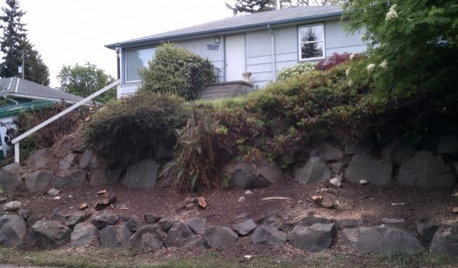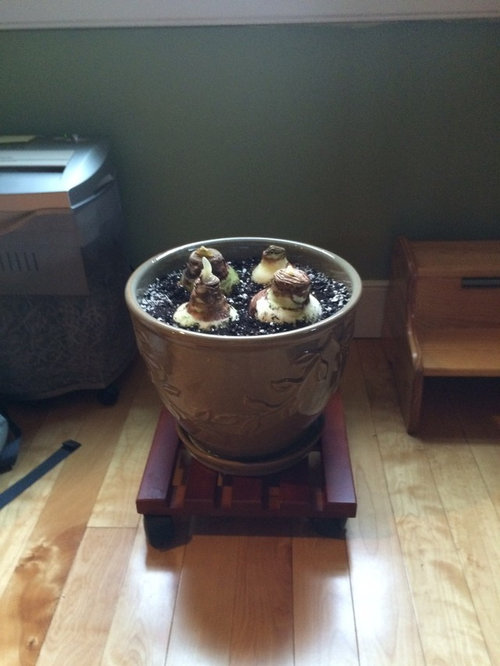Pictures and a potting question
gryffin
9 years ago
Related Stories

EXTERIORSCurb Appeal Feeling a Little Off? Some Questions to Consider
Color, scale, proportion, trim ... 14 things to think about if your exterior is bugging you
Full Story
KITCHEN DESIGN9 Questions to Ask When Planning a Kitchen Pantry
Avoid blunders and get the storage space and layout you need by asking these questions before you begin
Full Story
FEEL-GOOD HOMEThe Question That Can Make You Love Your Home More
Change your relationship with your house for the better by focusing on the answer to something designers often ask
Full Story
ORGANIZING4 Questions to Help You Organize Your Favorite Photos
Organize your keeper photos with a system that's just right for you, whether it's in the cloud or you can hold it in your hand
Full Story
REMODELING GUIDES13 Essential Questions to Ask Yourself Before Tackling a Renovation
No one knows you better than yourself, so to get the remodel you truly want, consider these questions first
Full Story
ORGANIZINGPre-Storage Checklist: 10 Questions to Ask Yourself Before You Store
Wait, stop. Do you really need to keep that item you’re about to put into storage?
Full Story
WORKING WITH PROS12 Questions Your Interior Designer Should Ask You
The best decorators aren’t dictators — and they’re not mind readers either. To understand your tastes, they need this essential info
Full Story
DOORS5 Questions to Ask Before Installing a Barn Door
Find out whether that barn door you love is the right solution for your space
Full Story
GREEN BUILDINGConsidering Concrete Floors? 3 Green-Minded Questions to Ask
Learn what’s in your concrete and about sustainability to make a healthy choice for your home and the earth
Full Story
Design Dilemmas: 5 Questions for Design Stars
Share Your Design Know-How on the Houzz Questions Board
Full StoryMore Discussions







gryffinOriginal Author
gryffinOriginal Author
Related Professionals
West Milford Landscape Architects & Landscape Designers · Kapaa Landscape Architects & Landscape Designers · Marco Island Landscape Architects & Landscape Designers · Signal Hill Landscape Architects & Landscape Designers · Stoughton Landscape Contractors · Bedford Heights Landscape Contractors · Eureka Landscape Contractors · Middleton Landscape Contractors · New Cassel Landscape Contractors · Oviedo Landscape Contractors · Spring Landscape Contractors · Welby Landscape Contractors · West Puente Valley Swimming Pool Builders · Brookhaven Outdoor Lighting & Audio Visual Systems · Fountain Hills Outdoor Lighting & Audio Visual SystemsgryffinOriginal Author
gryffinOriginal Author
gryffinOriginal Author
gryffinOriginal Author
gryffinOriginal Author
kaboehm (zone 9a, TX USA)
dondeldux z6b South Shore Massachusetts
gryffinOriginal Author
kaboehm (zone 9a, TX USA)
gryffinOriginal Author
kaboehm (zone 9a, TX USA)
macroclemys
jodik_gw
kaboehm (zone 9a, TX USA)
gryffinOriginal Author
kaboehm (zone 9a, TX USA)
jodik_gw
kaboehm (zone 9a, TX USA)
haweha
jodik_gw
gryffinOriginal Author
kaboehm (zone 9a, TX USA)
gryffinOriginal Author
kaboehm (zone 9a, TX USA)
jodik_gw
kaboehm (zone 9a, TX USA)
jodik_gw
kaboehm (zone 9a, TX USA)
jodik_gw